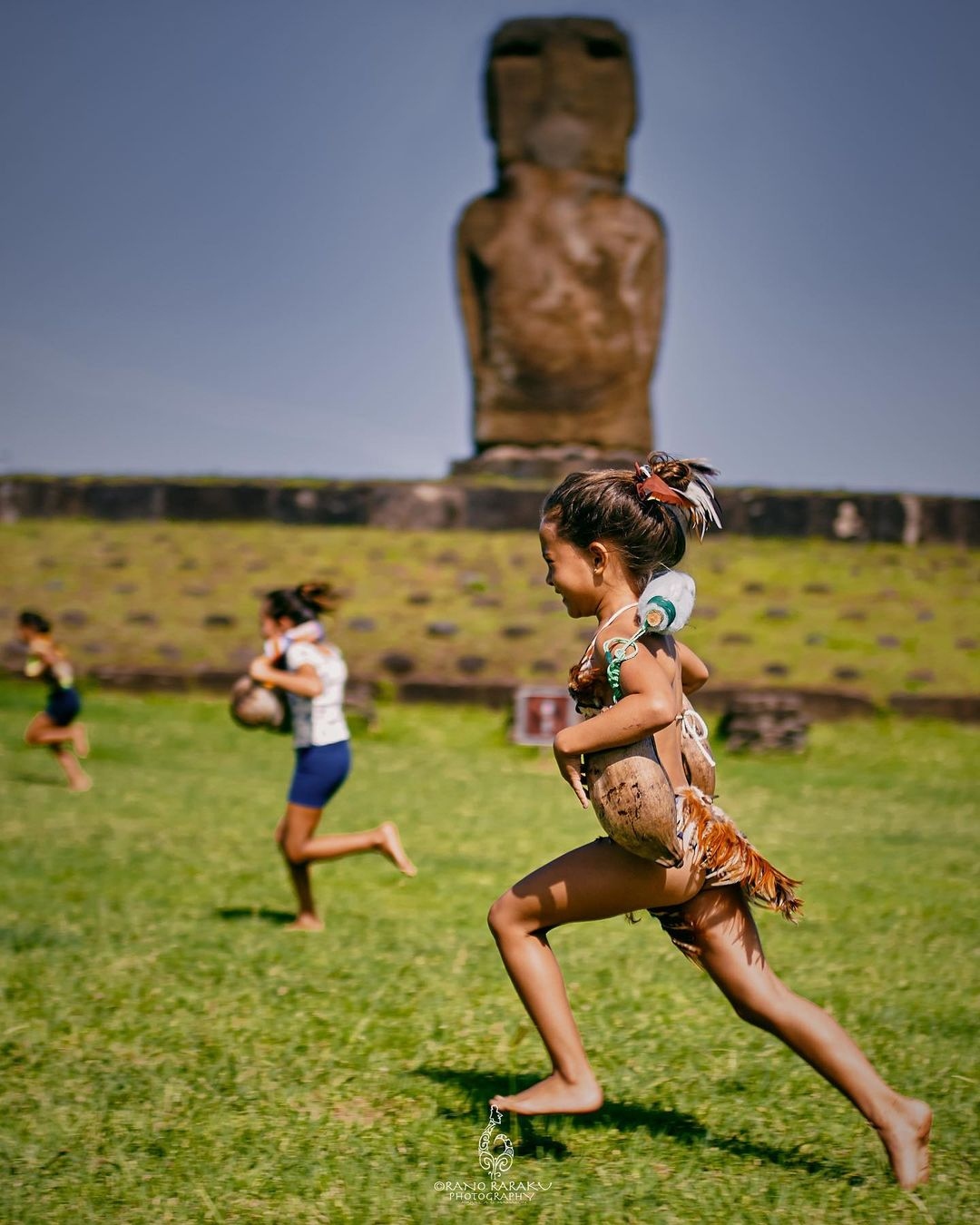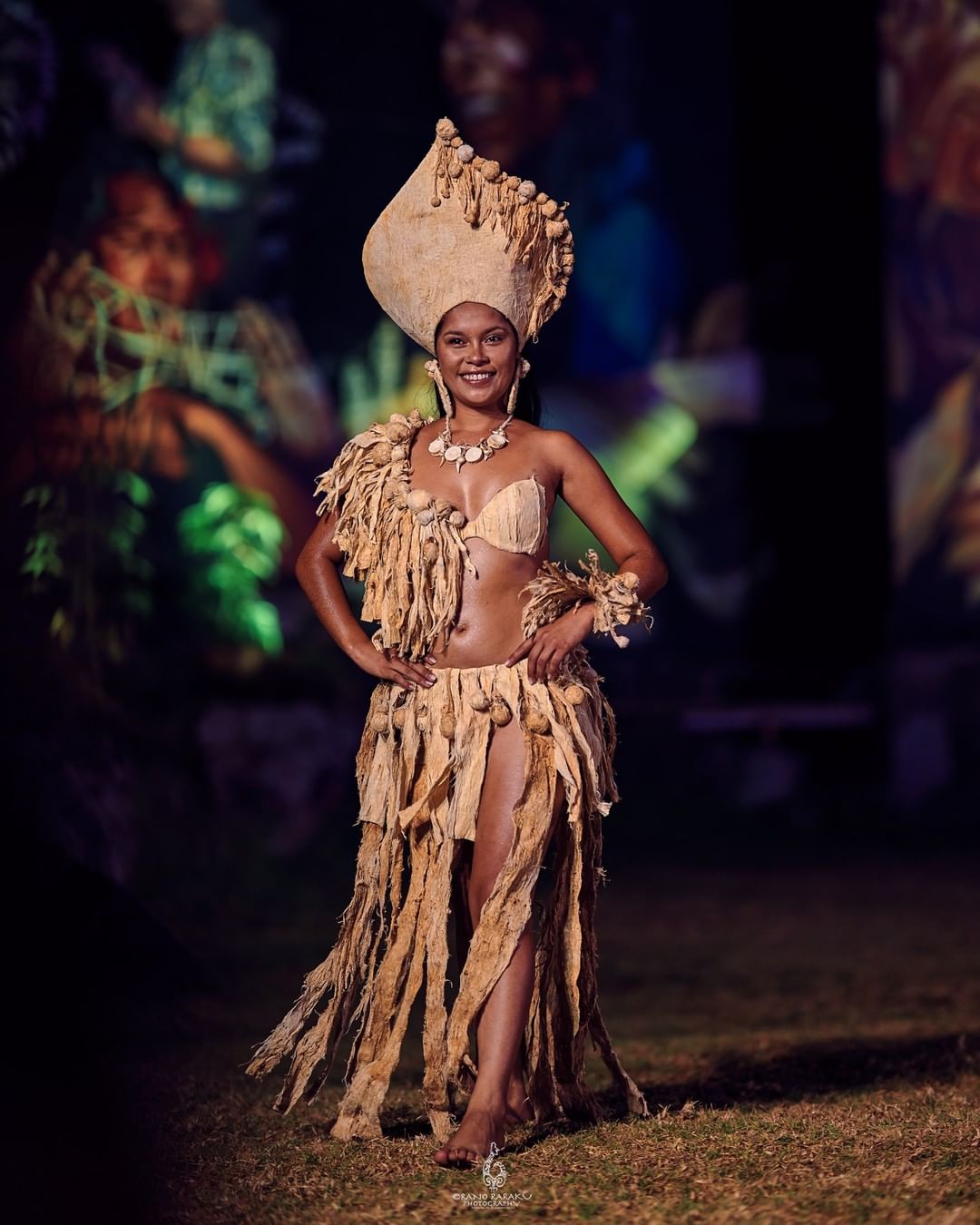2021 RAPA NUI TAPATI FESTIVAL
By: Chile Travel - 28 August, 2021

DISCOVER THE MAGIC OF THE TAPATI FESTIVAL IN RAPA NUI
It all starts in mid-February with a party under the stars on the Chilean island of Rapa Nui, located in the eastern corner of the “Polynesian triangle”, in the South Pacific. On that night, the island’s different clans present their candidates to be Queen of Tapati or the “Ariki Tapati” in Rapa Nui language.
What will happen next are several days of great joy and celebration, healthy competition, adrenaline, ancestral rituals and traditions, through which the origins of this mystical Polynesian people are renewed.
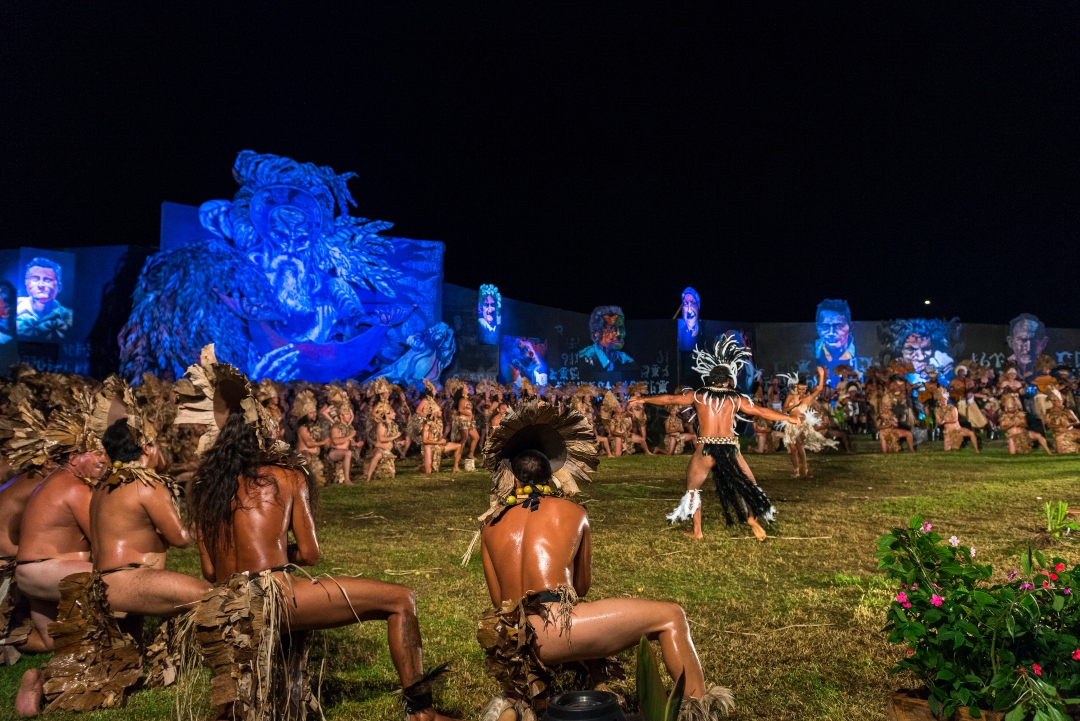
TWO WEEKS TO RETURN TO ORIGIN
During the festival’s fifteen days, all the family clans with their friends and guests compete in different sports and artistic activities, which aim to support the candidacy of their queen, honor their ancestors and relive the community’s most vivid traditions. The whole community participates, young and old!
[@ tapati_rapanui].
This year, exceptionally, due to the Covid-19 pandemic, the island is closed and the Tapati will be held without tourists or visitors, and for only one week between January 29th and February 5th. But be prepared! No matter what, the Tapati is celebrated every year, so surely in 2022 it will be back with even more strength and energy.
Although nowadays the Rapa Nui Tapati is quite a big party, it is important to know that in the past the competitions were not intended to celebrate the Rapa Nui traditions or to share them with visitors, but to determine which clan would rule the island.
We invite you to learn about these ancestral competitions starting with their sporting events.
TAU’A RAPA NUI, ONLY FOR THE BRAVE!
Before the athletic competitions begin, each clan chooses its representatives based on their physical condition, considering that they will have to compete in tests of strength, endurance, dexterity, courage and concentration.
The triathlon or Tau’a Rapa Nui is the first of the sporting competitions. It is extremely demanding and pushes the competitors’ endurance to the limit. First, the competitors must row across the beautiful lagoon that’s inside the crater of the Rano Raraku volcano on a small raft made of totora reeds (cat-tail). When they reach the shore, they hang 20-kilo packs of bananas on their necks and then run around the entire perimeter of the lagoon with them on their backs. This test ends when they cross the volcano’s lagoon again, this time swimming with the support of a cattail float.

THE HAKA PEI: A SLED DOWN THE HILL
Can you imagine what it would be like to throw yourself down a hill on a sled made of tied-up logs? This is the second competition that the Rapa Nui athletes must overcome. The descent is extremely dangerous, some reach speeds of up to 80 km/hr (50 miles per hour) on the way down. Full adrenaline rush!
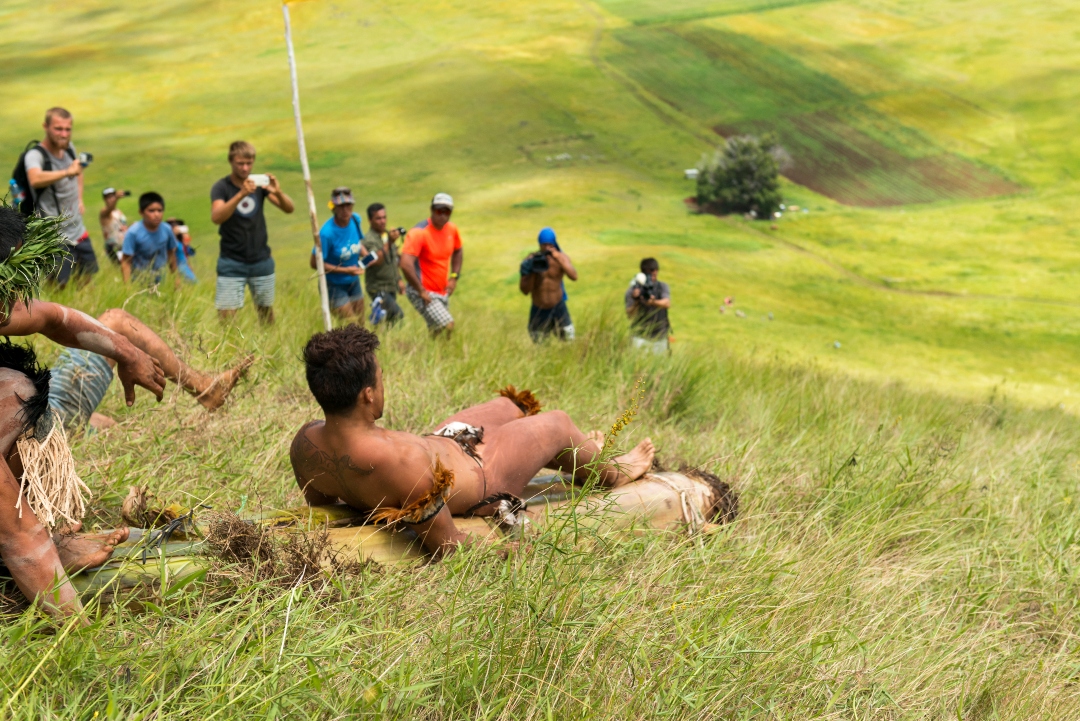
HOI RACES
Horses are so important to the Rapa Nui people that the Tapati also includes some races where the winners not only accumulate points for their queen, but also receive prizes for their skills in riding their “hoi” (horse).
Photo: IG @tapati_rapanui
NO FEAR OF THE WATER
The ocean is also a very important part of the Rapa Nui culture, so now the competition continues in the open water. In this race, six rowers from each team take the canoe they built with totora reeds and do their best to reach the finish line, located 5 km (3 mi) from the coast. The waves and tides, rarely calm on the island, do not make it easy, being that the Pacific Ocean is not a very “peaceful” one.
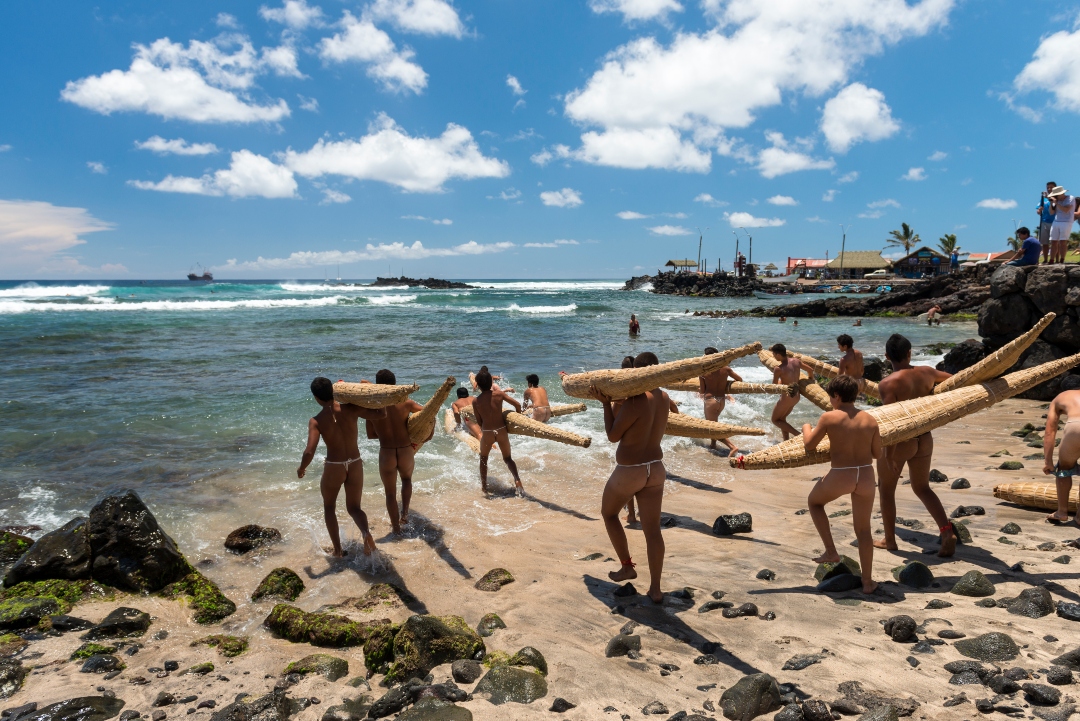
Haka Honu and Haka Ngaru are two other competitions in the ocean that are very similar as they both measure the swimming ability of the competitors of each clan. While in the first one they must imitate the swimming of sea turtles, in the second one, they must carry a kind of “body board” made of totora reeds that helps them to stay afloat in this demanding race. All for the queen!
ANCESTRAL ARTS, CRAFTS AND GASTRONOMY THAT ARE UNIQUE
If sports are not your thing, or if you just want to see more of the island’s culture and traditions, you can check out the artistic skills and handicraft competitions. Here, you’ll be dazzled by the creation of the longest canvas, the making of native costumes and the carving of stone and wood.
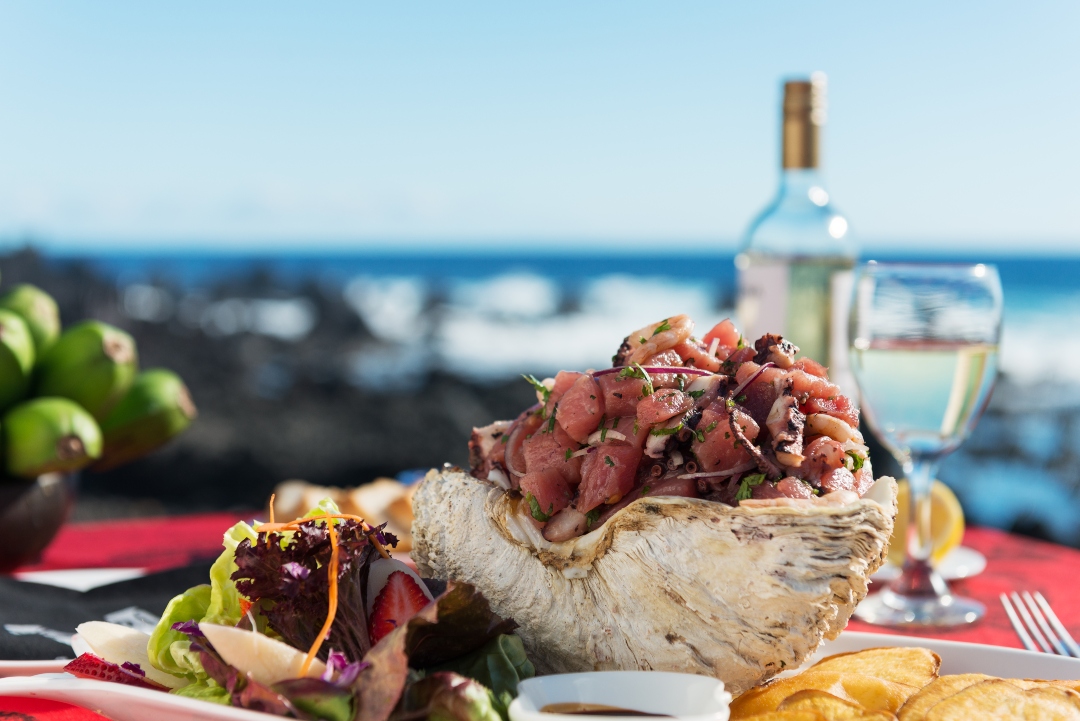
And from the manual arts we’ll move on to enjoy good local food in a cook-off. This is a test where the exquisite richness of the fruits harvested on the island will awaken all your senses. Getting the biggest watermelon, the heaviest bunch of bananas and the sweetest pineapple, among other products, gives points to each clan.
THE TAKONA AND KAI KAI AWAKEN THE ANCESTORS
And we continue progressing in this festival of traditions, surrounded by beautiful scenarios and next to the enchanting sound of Rapa Nui music. The clans show off their costumes and make-up that are specifically designed for the traditional dance and song show.
In the Takona, family clans also relate their experiences and some participants tell their story while weaving a rope between their fingers.
Photo: IG [@tapati_rapanui].
CORONATION OF THE ARIKI
The Tapati Rapa Nui now starts to come to an end with a parade of allegorical carriages, where each clan does its best to show their queen’s beauty, hoping that she will be the one to take the crown on the following night.
To the sound of music, visitors are invited to join the parade, to dance, to paint their faces and bodies with traditional dyes and to choose the float they like the most. The more people that a clan adds to their float, the more points they get in the competition.
Finally, this long celebration ends in the area of Ahu Tahai, located on the north coast of the island, where people quietly wait for the sunset to perform the last ceremony where the queen is crowned, the Rapa Nui Tapati is bid farewell and energies are released in order to prepare for the next celebration.
KA OHO TAHI MAI A NEI – EVERYONE, COME AND VISIT!
Photo: IG [@tapati_rapanui].
















